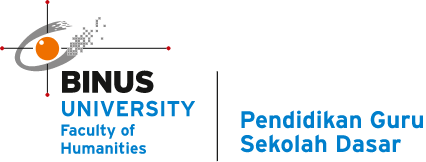Guided Inquiry Learning Method
According to Sanjaya (2006), the method is the technique used to put in force plans that have been prepared in real things to do so that the goals that have been compiled are completed optimally. The approach is the technique used to obtain the referred to goals. So, the method is a way that is organised to acquire dreams optimally.
Learning strategies are closely related to instructing techniques via instructors in the classroom, particularly a technique or device used through a teacher in delivering mastering fabric so that it can be regularly occurring using college students and additionally the achievement of favoured desires (Sudjana, 2002). One getting to know the approach that can be applied is inquiry getting to know the method. According to Sanjaya (2006), inquiry studying approach is a sequence of getting to know things to do that emphasise the manner of thinking significantly and analytically to discover and discover out for themselves the answers to a puzzling problem. Whereas according to Victor & Kellough, the inquiry is a process in answering questions and fixing problems primarily based on logical trying out of statistics and observations (Kalelioglu, Filiz dan Yasemin Gulbahar, 2012). From this explanation, it can be concluded that in using inquiry studying methods, college students are required to be energetic in the system of observing, searching, testing, and concluding options to trouble so that learning is extra significant and is anticipated to help students clear up related problems in daily life.
Inquiry gaining knowledge of method starts with questions of trouble that is caused, then processed and drawn from the gazing and investigating activities. This was cited by using the Baptist in the Fibonacci Project (2012) that inquiry in arithmetic starts of evolved from a query or a hassle and is answered using commentary or exploration. The learning manner does not start using giving formulation such as these that are still by and large executed by the trainer at this time but are sought and concluded using the students themselves. Therefore, the teacher’s job is to sketch everything before beginning mastering the usage of this method.
Learning with the inquiry approach is getting to know that seeks to instil the basics of scientific thinking. This can be seen from the implementation tiers of getting to know the use of the inquiry method. The stages Inquiry getting to know used in this find out about is the stage described by Sanjaya (2006), namely: 1) orientation, 2) formulating the problem, 3) formulating the hypothesis, 4) accumulating data, 5) trying out the hypothesis, 6) formulating conclusions. The explanation of these stages can be seen in the explanation below:
- Orientation
The teacher stimulates and invites students to solve the problem. Things that can be done by the teacher include: explaining the topics, objectives, and expected to learn outcomes. Then the teacher explains the general picture of the learning process using the inquiry method and its benefits and explains the benefits or importance of studying the material to be discussed.
- Formulate a problem
Students are presented with problems that contain puzzles whose answers are specific. The teacher encourages students to formulate a problem where the answer is already there; only students are looking for and getting the answer for sure. The concepts in the problem are concepts that students already know. This will be used by students as known information to answer the problem.
- Formulate a hypothesis
Students are asked to determine short answers to a problem being studied. One of the ways that teachers can develop the ability to guess (hypothesise) for each child is by asking various questions that can encourage students to formulate answers or various estimates of the possible answers to a problem under study.
- Collect data
Activities compile information that exists and is needed to test hypotheses made. The task and role of the teacher in this stage is to ask questions that encourage students to think of looking for information that is available and needed to be subsequently continued at the stage of testing the hypothesis
- Test the hypothesis
Testing hypotheses are the process of determining answers that are considered by data and information obtained from the previous process. In this process, students can make observations, investigations, or exploration to get the right solution to the problem.
- Formulate conclusions
The process of describing the findings obtained based on the results of testing the hypothesis, in this case, has been applied in general and proven truth.
References
Baptist, Peter. Inquiry in Mathematics Education. France: The Fibonacci Project, 2012.
Kalelioglu, Filiz dan Yasemin Gulbahar. “The effect of instructional techniques on critical thinking and critical disposition in online discussion” International Forum of Educational Technology & Society. ISSN 1436-4522 (online) dan 1176-3647 (print), 2012: 248-258.
Sanjaya, Wina. Strategi Pembelajaran Berorientasi Standar Proses Guruan. Bandung: Kencana Prenademia Group, 2006.
Sudjana, Nana. Penilaian Hasil Proses Belajar Mengajar. Bandung: Remaja Rosdakarya, 2002.

Comments :